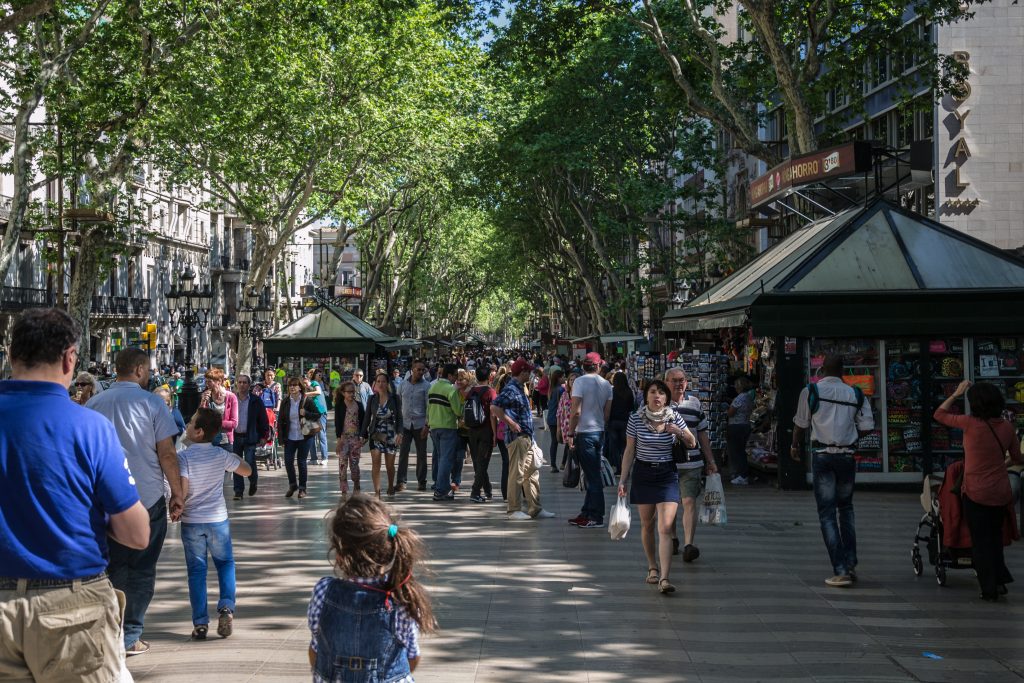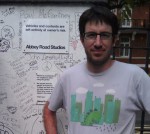Rethinking La Rambla
All the city news you can use.

La Rambla, Barcelona, Spain. Photo by Domenico Convertini., (CC BY-SA 2.0)
Every day at The Overhead Wire we sort through over 1,500 news items about cities and share the best ones with our email list. Each week, we take some of the most popular stories and share them with Urban Milwaukee readers. They are national (or international) links, sometimes entertaining and sometimes absurd, but hopefully useful.
Rethinking La Rambla: In Barcelona, officials are worried about over-tourism in the form of rowdy bachelor and bachelorette parties and the proliferation of what some see as tacky souvenir shops and restaurants along La Rambla. To remedy this, the street will be redesigned with sidewalks widened to five meters (16 ft) and vehicle lanes reduced for internal trips and buses while three new public squares will be created. Not in the plans are a focus on housing and commercial support to bring a more diverse crowd. (Ianko López | El Pais)
HUD considers cash over vouchers: HUD is considering taking up an experiment it started over 50 years ago that gave cash aid to people seeking housing instead of vouchers. Vouchers have stigma attached to them which has kept landlords from renting to people with them even though discrimination is prohibited. And 40% of voucher holders can’t find a place within the first 6 months of looking. (Jennifer Ludden | NPR)
Galveston faces sea level rise, developers still building: After the 1900 hurricane devastated Galveston and moved the state’s center of gravity to Houston, the city raised the land and built a 17 foot sea wall around the city. Now as the speed of sea level rise increases, so does the likelihood of future flooding and disasters. But developers are still keen to build outside of the protections built years ago in part because there is money to be made, but also it seems they believe they can beat nature. (Chris Mooney, John Muyskens and Brady Dennis | Washington Post)
A narrow townhouse in Pittsburgh: Developers surveyed 10,000 homeowners and renters during the pandemic to find out how the pandemic changed people’s thinking about their homes. The result was a home called the “Picket Fence”. The design is three stories with an ADU on the bottom floor and at just 16 feet wide it can be pre-fabricated off site and brought in on trucks while also fitting on many small 20 foot wide lots that dominate older manufacturing cities. (Adele Peters | Fast Company)
Risks of the self-fulfilling travel model: A new USDOT vehicle miles traveled forecast that predicts increased driving to 2050 suggests that past trends will continue into the future. Todd Litman argues this is bad planning in that it doesn’t take into account underlying factors that may impact travel activity or that travel and economic development have been decoupling. In reality vehicle travel peaked in 2004 and the forecasts are often self fulfilling, forcing us to spend money on adding capacity for a predicted future that may never come. (Todd Litman | Planetizen)
Quote of the Week
There was no [other] study like that. There was no literature, so I had to start from scratch… What I found is that…from the 1930s…until 1978, [roughly] 82 percent of all the garbage disposed in Houston was disposed in predominantly Black neighborhoods, even though Blacks made up only [about] 25 percent of the population during that period…
-Dr. Robert Bullard, father of the environmental justice movement, discussing his early work. He was awarded the ULI Prize for Visionaries in Urban Development.
This week on the podcast, we’re joined by podcaster and transit expert Paul Comfort and former California State Transportation Agency Secretary David Kim to talk about their ensemble book The New Future of Public Transportation.
Want more links to read? Visit The Overhead Wire and signup.
Urban Reads
-
Car Loans Now Second-Highest Household Debt
 Sep 21st, 2024 by Jeff Wood
Sep 21st, 2024 by Jeff Wood
-
How Strip Malls Failed the Burbs
 Sep 15th, 2024 by Jeff Wood
Sep 15th, 2024 by Jeff Wood
-
The School Bus Crisis
 Sep 7th, 2024 by Jeff Wood
Sep 7th, 2024 by Jeff Wood




















